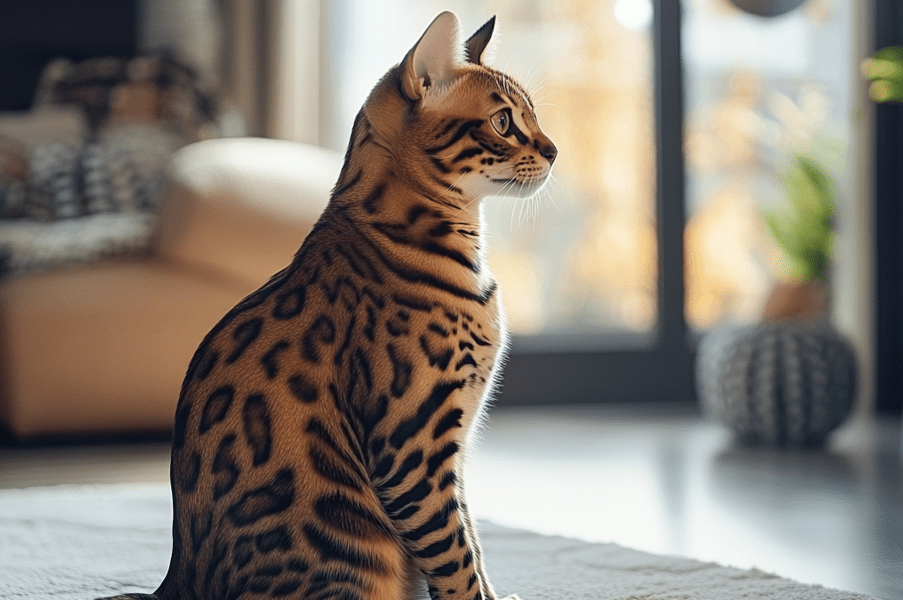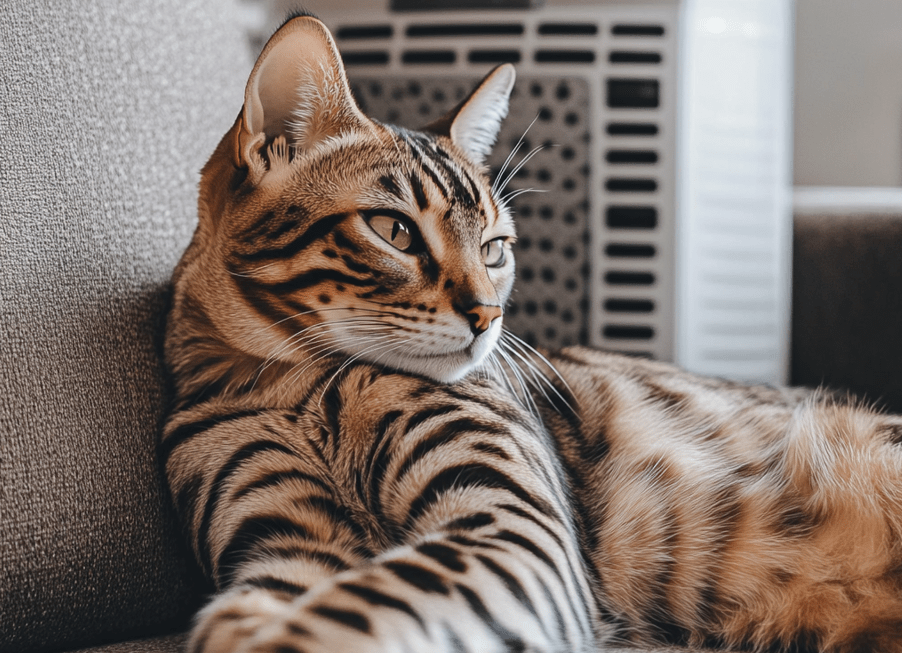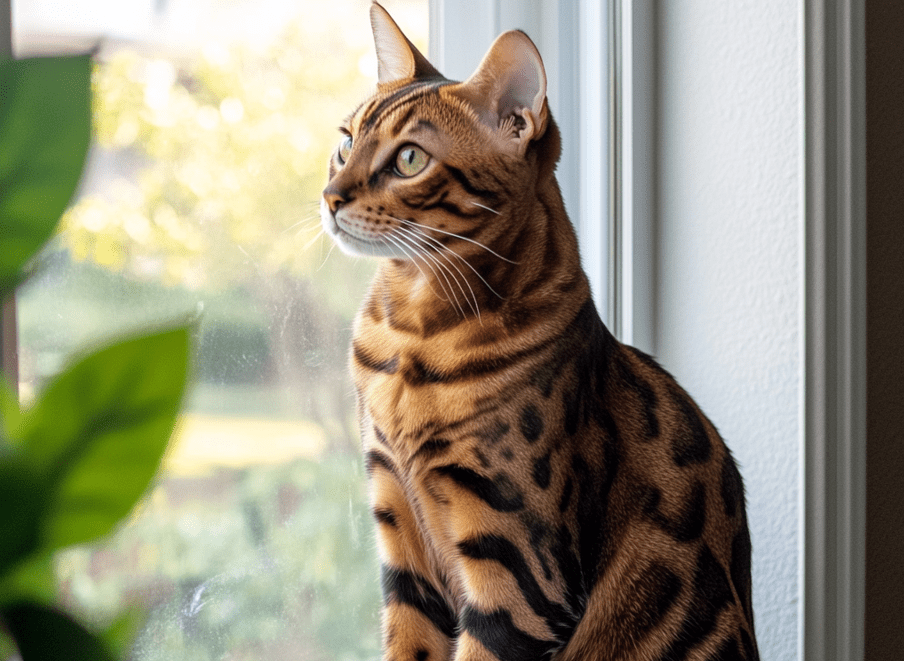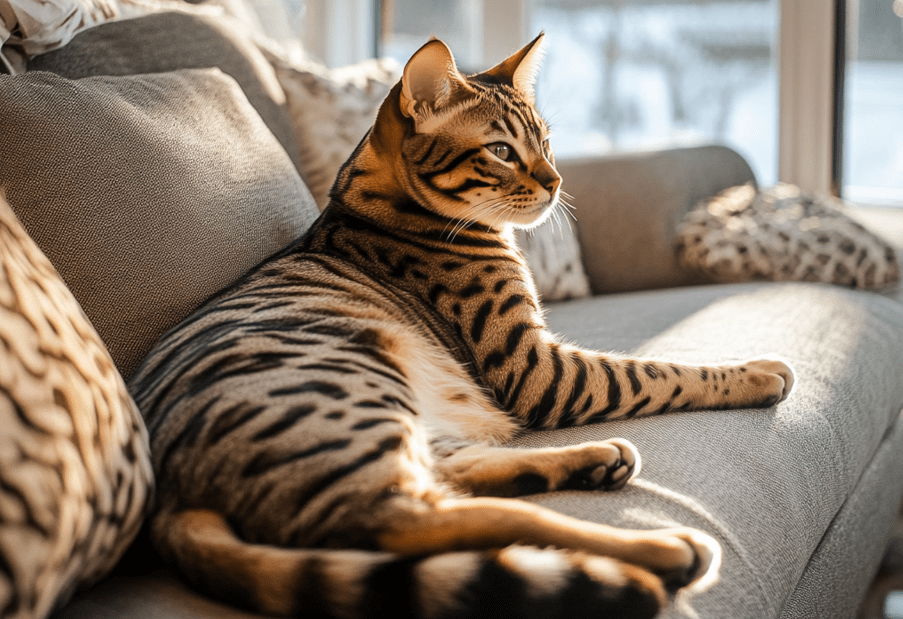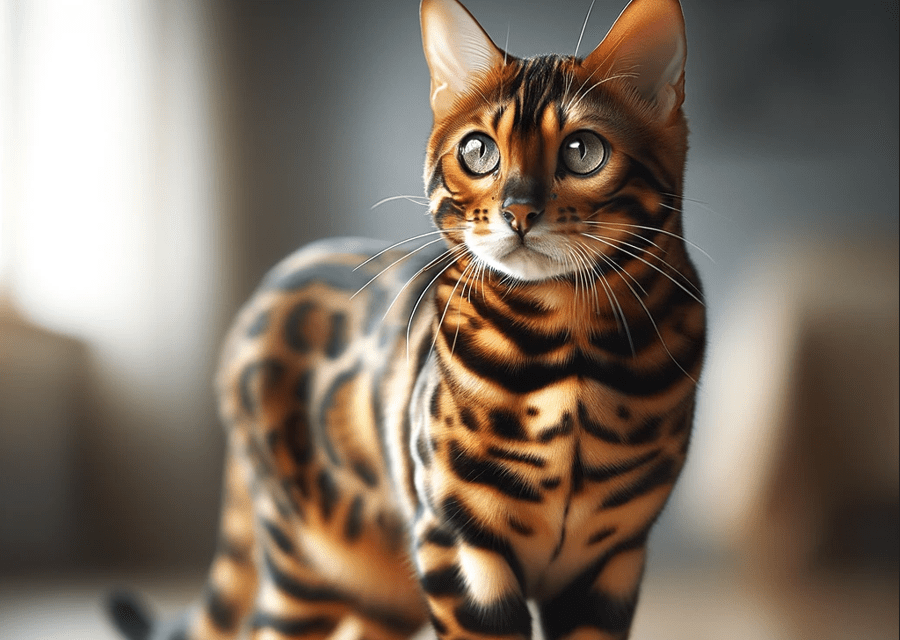
Introduction
Are you considering acquiring a Bengal cat? While these stunning felines are known for their exotic appearances and playful personalities, there are several challenges to owning a Bengal cat that potential owners should consider. Bengals represent different house cats, since they possess distinct behaviors that combine enjoyable characteristics with challenging aspects. Before adding a Bengal to your household, you need to comprehend thoroughly the commitments involved.
Bengal cats originate from wild Asian leopard cats that also give these animals their high energy potential and active nature. Providing intense stimulation and attention goes above and beyond the average requirements for this breed, transforming them into lively members of any home. The high energy of Bengal cats becomes problematic unless they receive proper direction. Bengal cats typically make more noise than expected through their speaking abilities due to their well-known talkative character.
The natural hunting behavior of Bengals represents a potential issue when you own small domestic animals. Pet parents considering the adoption of these captivating cats need to evaluate all aspects related to their grooming needs together with financial responsibilities and potential health concerns. Such territoriality in Bengal cats can result in battles between different pets unless owners take steps to manage it properly.
In this article, we have explored several unexpected difficulties that prospective Bengal owners should realize. Knowing these challenges in advance helps prepare you to handle the fulfilling yet challenging experience of caring for Bengal cats. Understanding the challenges ahead will lead to harmonious interactions between you and your new Bengal cat, whether you have cat experience or not.
High Energy Levels
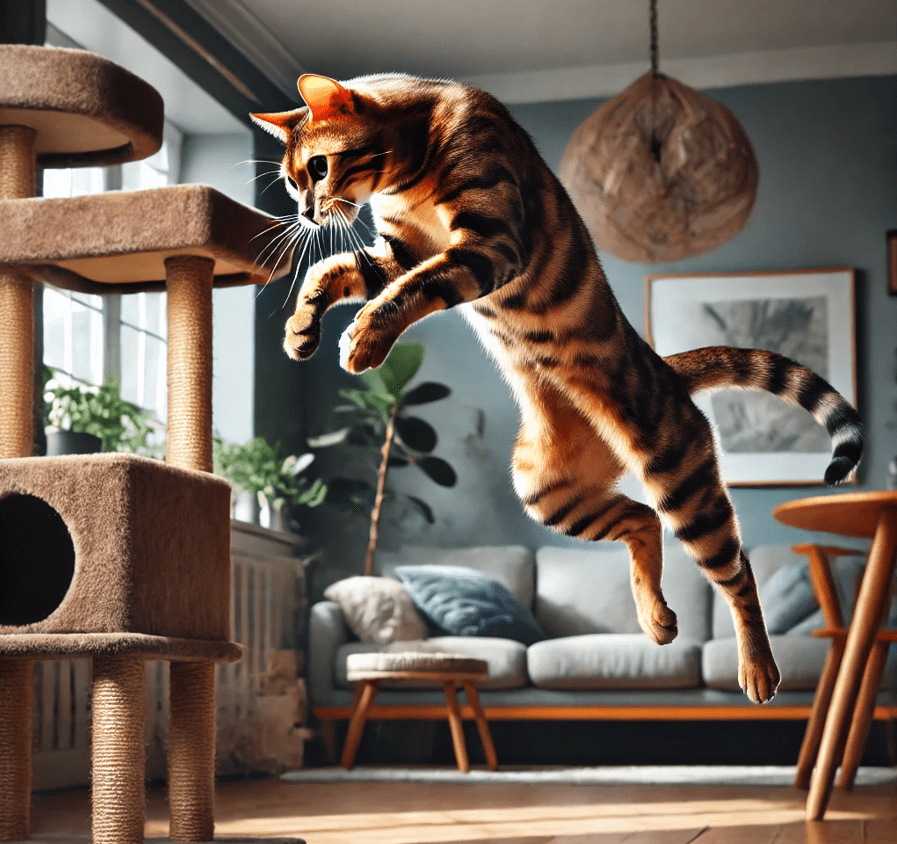
In the feline world, Bengal cats match the levels of excitement found in the Ferrari brand. They appear both exotic and high-energy. When you get a Bengal cat, you also accept a nonstop workout partner, although you cannot bypass his duties. The felines possess surging energy levels that exceed what most domestic cats possess.
Your Bengal cat will use your home territory as a training ground to perform exceptional Olympic-level acrobatics. The lack of suitable energy outlets will prompt Bengals to exercise destructive behavior by damaging home furnishings or by knocking objects around for entertainment.
Everyday play sessions are a necessary requirement for Bengal owners. The positive redirection of Bengal cat energy becomes possible through interactive toys combined with puzzle feeders and training sessions for outdoor walks.
A Bengal cat will not become a relaxed lap pet for someone seeking such affection. These bouncy feline pets are suitable for people who seek constant movement and enthusiasm from their pet companions.
Bengals represent a particularly athletic cat breed that exhibits high degrees of movement and liveliness. Bengals rest with the same regularity as other cats, but between sleeping periods, they prefer to dash around and pressure their humans to locate them for entertainment.
Due to their ancestry from the wild Asian leopard cat, Bengal cats exhibit an energetic disposition. These felines need active interaction rather than simple passive activities that must stimulate their bodies and minds. Without proper stimulation, a Bengal cat can develop feelings of boredom, which may result in destructive conduct. A Bengal cat requires an appropriate amount of space for climbing, exploration, and leisure activities to maintain optimal happiness and well-being.
Vocal Communication
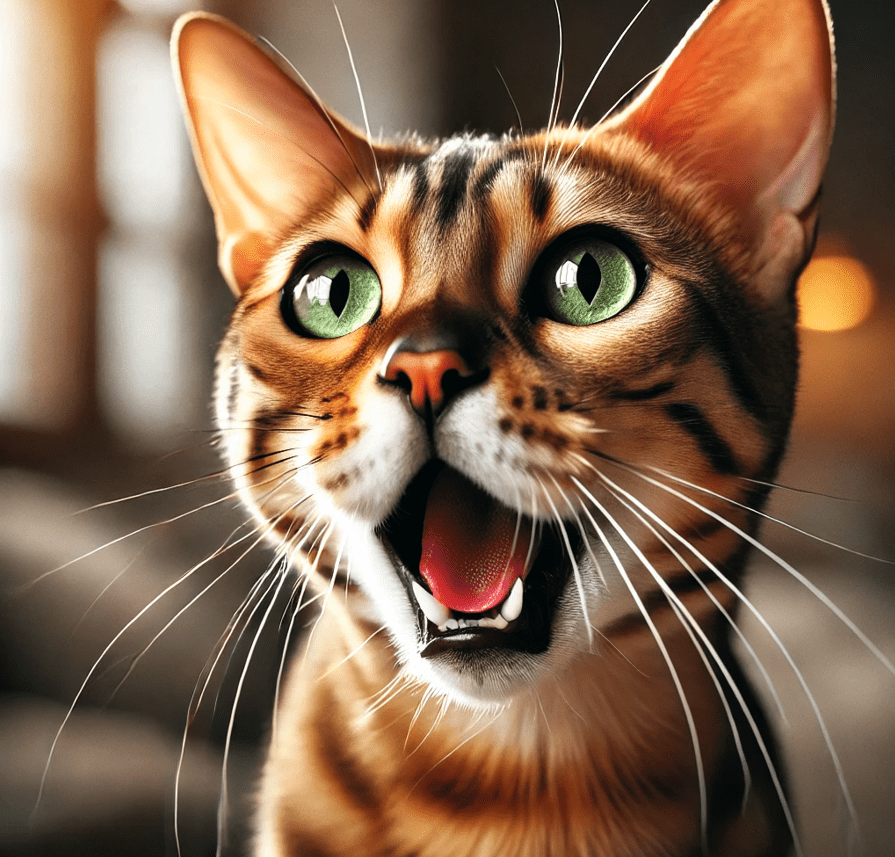
Upon encountering a Bengal cat, your experience will be even more talkative than with Siamese cats. Bengal cats deliver extensive vocal performances instead of typical meows. Bengals express their thoughts about every matter, including food requests and window squirrel observations, as well as signs of boredom.
People react differently to their speaking abilities since some regard it positively, but others experience communication challenges because of it. Bengals emit different vocalizations that include cheerful, high-pitched noises and aggressive howls, which reflect their emotional state. People who let their Bengals emerge from silence without acknowledging them will instantly discover how loud these cats can be.
The volume of their communication stays controlled when cat owners learn to interpret their signals and meet their requirements, either through feeding times, petting sessions, or play periods.
Bengals are interactive by nature, and they communicate freely through vocal expressions, so expect a never-ending performance of their daily happenings.
Predatory Instincts
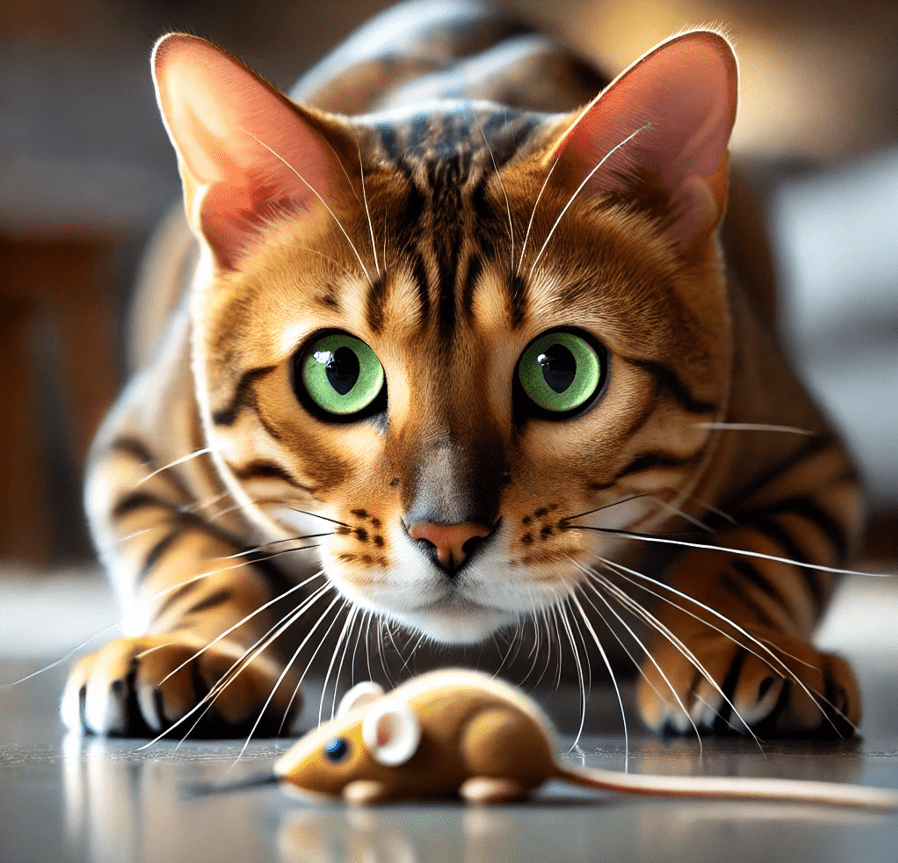
Bengals, descended from wild species, are natural hunters. Their natural hunting behavior involves slow stalking movements followed by powerful leaping actions to capture any target in sight, regardless of its mobility. Bengals display their hunting behavior toward toys as well as insects and sometimes even attempt to chase your feet. The natural hunting ability of Bengals poses challenges when you have little animals such as fish along with birds and hamsters as pets.
Bengals view their cohabitants as possible prey instead of close companions. When Bengals have access to the outdoors, they sometimes present unwanted wildlife creatures such as birds and mice to their human companions. The pursuit of indoor hunting experiences requires owners to buy wand toys together with laser pointers and interactive game devices that duplicate the thrill of hunting.
Physical exercise and mental stimulation for your cat will minimize their stalking behavior around your home. Their genetic makeup continues to activate their predatory impulses even though they might not show complete dominance of this trait.
Grooming Needs
The grooming needs of Bengals are slightly high due to their lack of lengthy fur. Brushing your Bengal regularly becomes essential since their quick coats shed profusely, which they can spread all over your home.
Bengals’ curious nature often leads to self-dirtying, which may necessitate occasional bathing, despite their reluctance to be bathed. In addition to coat care, the trimming of their nails and brushing of their teeth serve as essential aspects of their routine maintenance.
Periodic ear wax cleaning is an important practice for Bengal cats because ear problems can occur. Maintaining the health and appearance of Bengals requires enough care even though they require less intensive grooming than Persian cats do.
Financial Commitment
The price range of Bengals stands at $1,500 to more than $5,000 since it depends on pedigree status as well as coat patterns and the reputation of the breeder.
The significant initial purchase of a Bengal cat does not cover related accessories needed for their well-being, such as high-quality scratching posts or interactive toys or exercise items like cat wheels. High standards in breeding do not align with low prices, so reputable breeders must charge enough to maintain ethical operations.
Bengals require continuous expenses for premium pet food, along with veterinary attention and insurance coverage since these cats’ experience particular health problems that drive up costs. Future Bengal owners need to dedicate substantial resources toward bringing home this breed because the expenses become quite substantial.
The proper owner understands that a Bengal cat’s beauty together with personality makes them priceless, but these pets fall outside standard affordability.
Potential Health Issues
Bengals exhibit typical resilience, but their unique health issues require owners to prepare. As part of their potential health issues, they face two prominent problems: the heart condition hypertrophic cardiomyopathy (HCM) and the retina condition progressive retinal atrophy (PRA), which may cause blindness.
Bengals are known to develop irritable bowel syndrome (IBS) as well as other gastrointestinal conditions. Having regular visits to the vet combined with preventive care helps detect any health issues at their initial stages. Giving your pet insurance coverage represents a necessary decision because medical care expenses for these conditions tend to be expensive. Health outcomes of Bengal cats heavily depend on breeding practices; thus, owners must select a professional breeder who conducts genetic tests on their cats. Prospective Bengal owners need to understand that these medical concerns might occur, although they impact only a select number of Bengals.
Territorial Behavior
The residence of Bengals extends beyond inhabiting your home because they annex it as their domain. Because Bengals act territorially, they might show dominance toward selected areas along with toys and certain people.
Your other pets may suffer from issues because Bengals possess a limited tolerance for sharing their space with other animals. The successful introduction of new animals to your Bengal needs both patience and strategic planning to stop conflicts from happening. Territorial spraying represents a common issue mainly affecting uncastrated male cats.
Owners should consider spaying or neutering their Bengal cats while providing larger living spaces filled with multiple resources like perches and scratching areas to limit their need to establish boundaries.
Through training and socialization, owners can manage a Bengal cat’s assertive nature; however, these animals will permanently display their independent personalities.
Conclusion
Raising Bengal cats brings substantial satisfaction to owners, yet such a journey requires full knowledge of these special breed’s difficulties. Cats of the Bengal breed need extensive dedication from their owners due to their energetic nature and loud sounds as well as aggressive hunting tendencies. To determine if a Bengal cat matches your lifestyle, you must know the difficulties that come with caring for this particular breed.
You can build an excellent bond with your Bengal when you combine proper training with socialization while also providing mental stimulation in your feline friendship. The time spent playing engages their high energy but creates a stronger connection between you both.
Preventative efforts in maintaining your Bengal’s hygiene alongside taking care of its wellness requirements together with financial preparedness will provide your pet with optimal environmental conditions. Bengals display their attractive appearance combined with energetic natures but need owners who will provide proper care for them.
Taking on the challenges of Bengal cat ownership will result in such rewarding experiences as their loving temperament and playful character, making the effort worthwhile. Appropriate knowledge and preparation will help you establish a harmonious environment between you and your Bengal in your shared residence.

